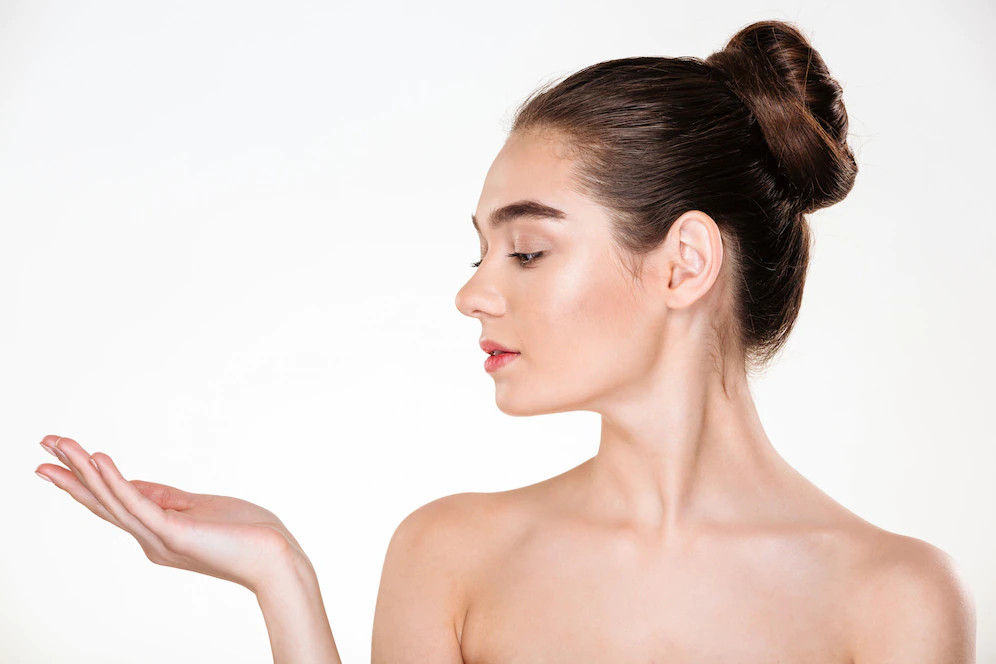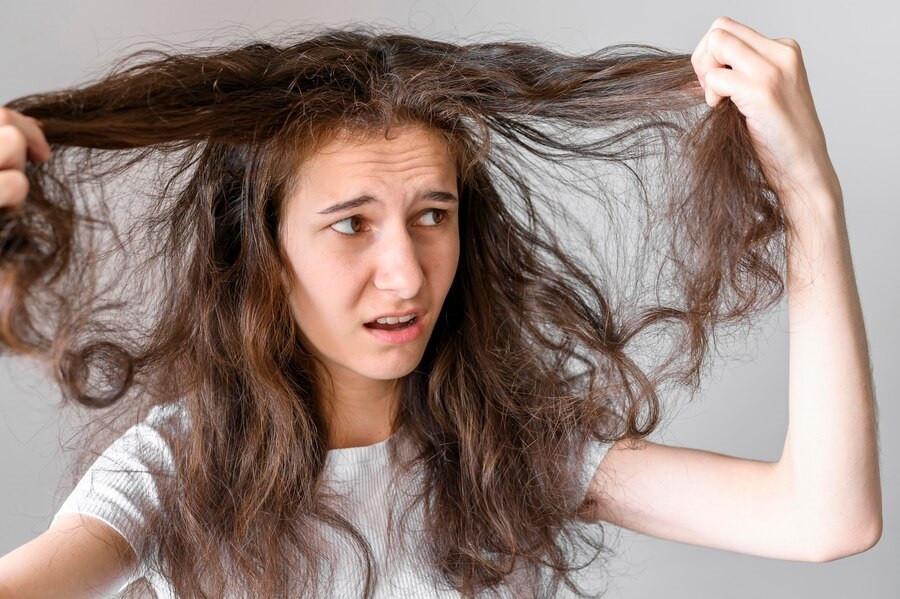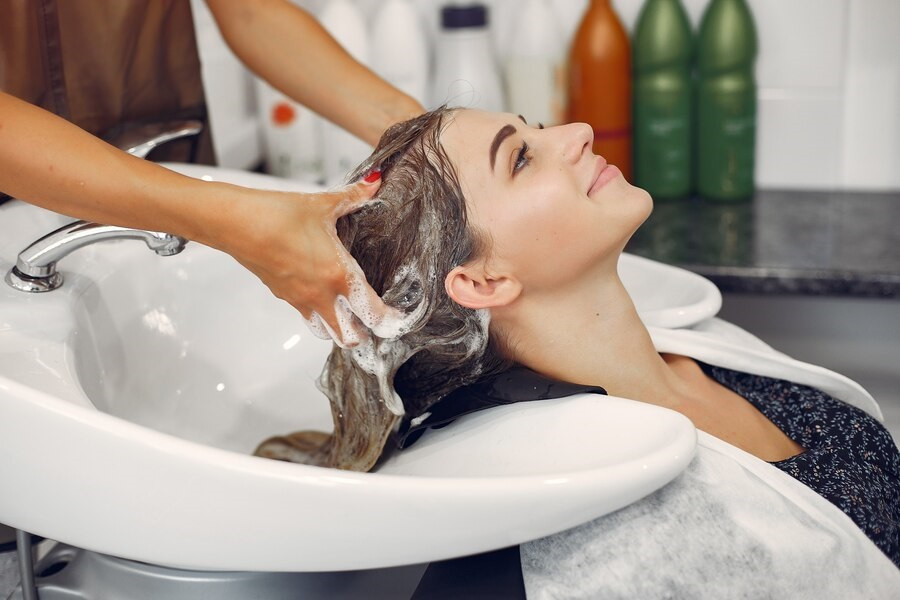Hair bleaching is a chemical process in which the natural pigment in the hair is removed so that the hair becomes lighter or white in color. This process is done using chemicals, such as hydrogen peroxide or ammonia, to open the cuticle layer of the hair and remove the natural pigment.
Usually, after the bleaching process is complete, the hair will be re-coloured with hair paint so that the chosen or desired color is easier to apply. By going through the bleaching process, the color paint on the hair becomes more visible.
The Risk of Hair Bleaching
Hydrogen peroxide is a widely utilized chemical in both hair bleaching and coloring processes. Although it is said to be quite safe, excessive use can lead to adverse effects on the hair, including:
- Potential irritation on the scalp and along the hairline.
- Damage to the cuticle. Leading to split ends and tangled strands
- The oxidative stress to the hair triggers damage to the hair follicles and increases the risk of hair loss.
What Are the Best Ways to Care for Hair Damaged by Bleaching?
Treating bleached damaged hair requires meticulous and intensive care to restore moisture, strength and healthy hair. The following are the best ways to treat damaged hair post-bleaching:
Choosing the right shampoo and conditioner
To treat dry hair, you need to choose hair care products, including shampoo and conditioner, that are specifically designed for damaged and dry hair. Shampoos that are gentle and free from sulfates help maintain the hair's natural moisture.
You should also opt for conditioners containing abundant natural moisturizers like argan oil, coconut oil, olive oil, almond oil, or rice water. Dry hair can greatly benefit from the use of leave-in conditioners, which keep moisture levels high for an extended time.
Regularly applying hair masks
Hair masks are an essential aspect of hair care, particularly for addressing damage caused by bleaching. To rejuvenate your hair's health, opt for a hair mask containing ingredients like protein, keratin, or natural oils. These components aid in repairing damage and replenishing moisture in the hair. Apply a hair mask at least once a week or as per your hair's requirements.
Refrain from using heat styling tools
Hair that has been bleached is generally more prone to heat damage caused by styling tools like hair dryers, straighteners, or curling irons. It's advisable to minimize the use of heating tools or adjust them to a lower temperature to mitigate the risk of damaging your hair.
Read more: 5 General Errors In Keramas Affecting Rambut Health
Regular hair trimming
Regular trimming can remove damaged and split ends. This is an effective way to prevent further hair damage and make hair look healthier.
Minimizes additional chemical processing
Avoid doing any more chemical processing, like recoloring or chemical curling, after bleaching.
It’s better to let the hair heal on its own to minimize further damage.
Wet hair should be handled with care, avoiding the use of a brush
Hair that is combed in wet conditions is more prone to breakage; refrain from combing your hair when it's wet. Instead, consider using a wide-toothed comb or gently using your fingers to tidy it up.
With consistent and proper care, bleached hair can regain its health. However, if you notice significant hair loss, persistent irritation, or continued damage despite care efforts, it's advisable to seek guidance from a dermatologist or professional hairstylist for further assistance.
Do you have any other concerns or inquiries about the health of your hair? Please seek a doctor through the health consultation services available on the Ai care application, downloadable from the App Store or Play Store.
Want to know more information on tips and tricks for health, first aid, and other home treatments? Click here!
- dr. Monica Salim
Mallika Bhattacharya (2022). What to Know About Hair Bleach. Available from: https://www.webmd.com/beauty/what-to-know-about-hair-bleach
Kathryn Watson (2020). 22 Tips to Hydrate and Repair Hair After Bleaching. Available from: https://www.healthline.com/health/beauty-skin-care/how-to-hydrate-hair-after-bleaching
Erin Jahns (2023). 11 Expert-Approved Tips to Fix Bleached, Damaged, and Over-Processed Hair. Available from: https://www.byrdie.com/how-to-fix-bleached-hair
Valencia Higuera (2023). Why Do I Have Dry Hair?. Available from: https://www.healthline.com/health/dry-hair
Erica Hersh (2019). Is Lightening Your Hair with Hydrogen Peroxide Damaging?. Available from: https://www.healthline.com/health/hydrogen-peroxide-hair
Rachel Ann Tee-Melegrito (2023). How to use hair serum: Dos and Don’ts. Available from: https://www.medicalnewstoday.com/articles/how-to-use-hair-serum
WebMD (2022). Dry Hair: Symptoms, Causes, and Treatments. Available from: https://www.webmd.com/beauty/dry-hair-causes
Grace Gallagher (2019). Everything You Need to Know About Using a Hair Mask. Available from: https://www.healthline.com/health/how-to-use-hair-mask
Annette McDermott (2024). How to Conceal or Get Rid of Split Ends. Available from: https://www.healthline.com/health/how-to-get-rid-of-split-ends
Del Sandeen (2023). 4 Signs You Need a Hair Trim. Available from: https://www.byrdie.com/signs-you-need-a-hair-trim-400151











